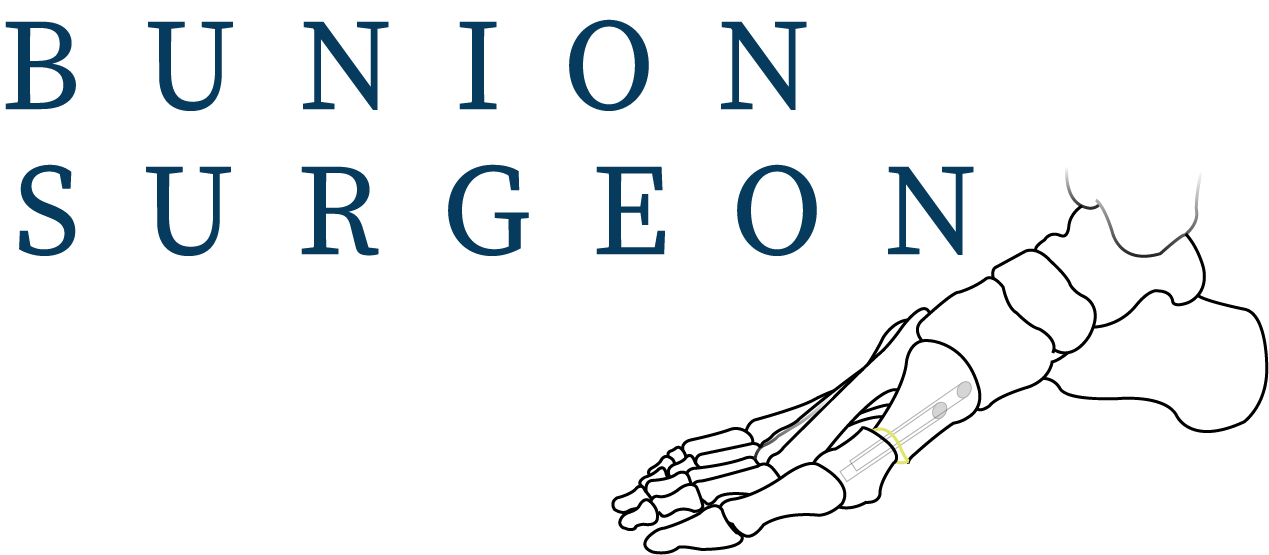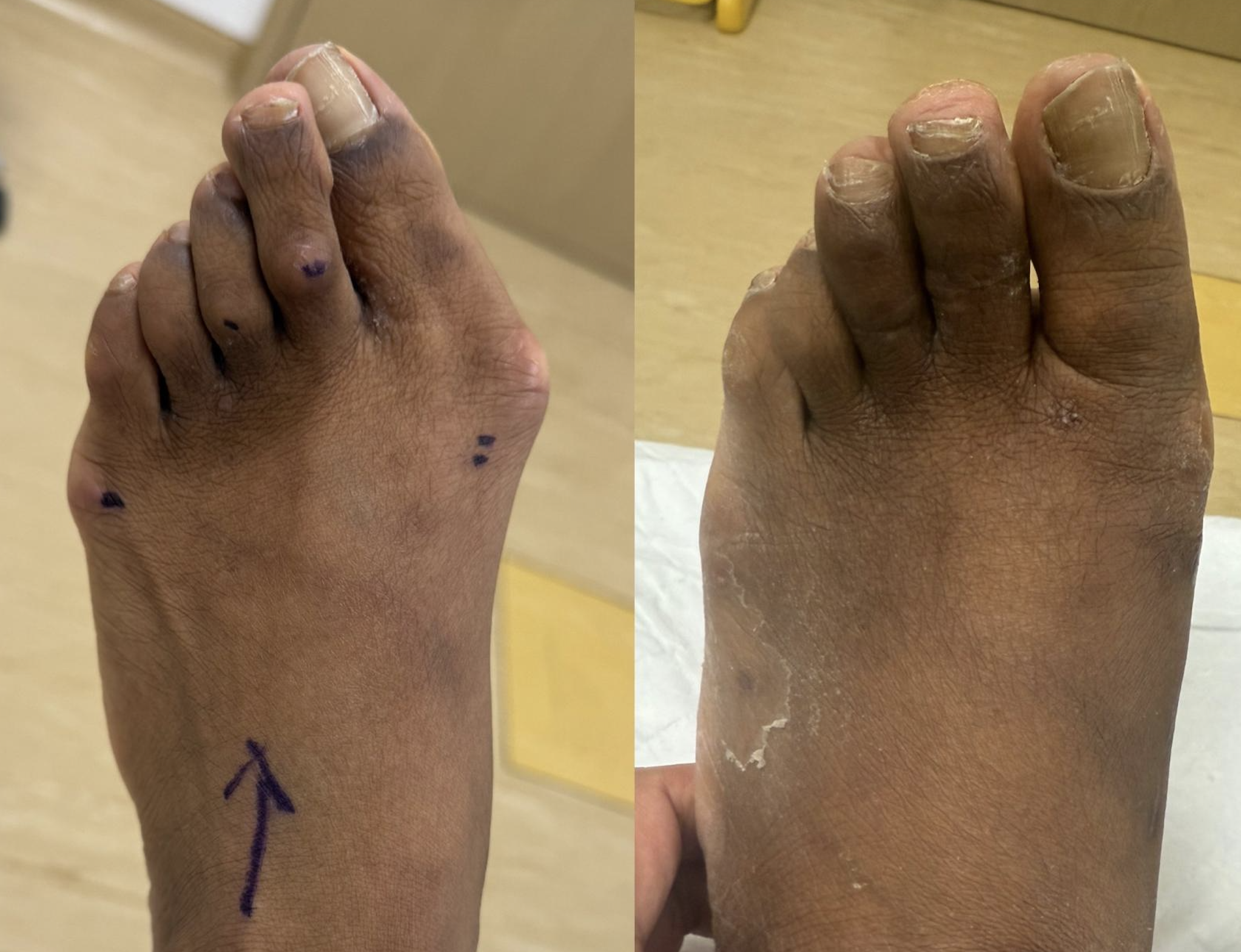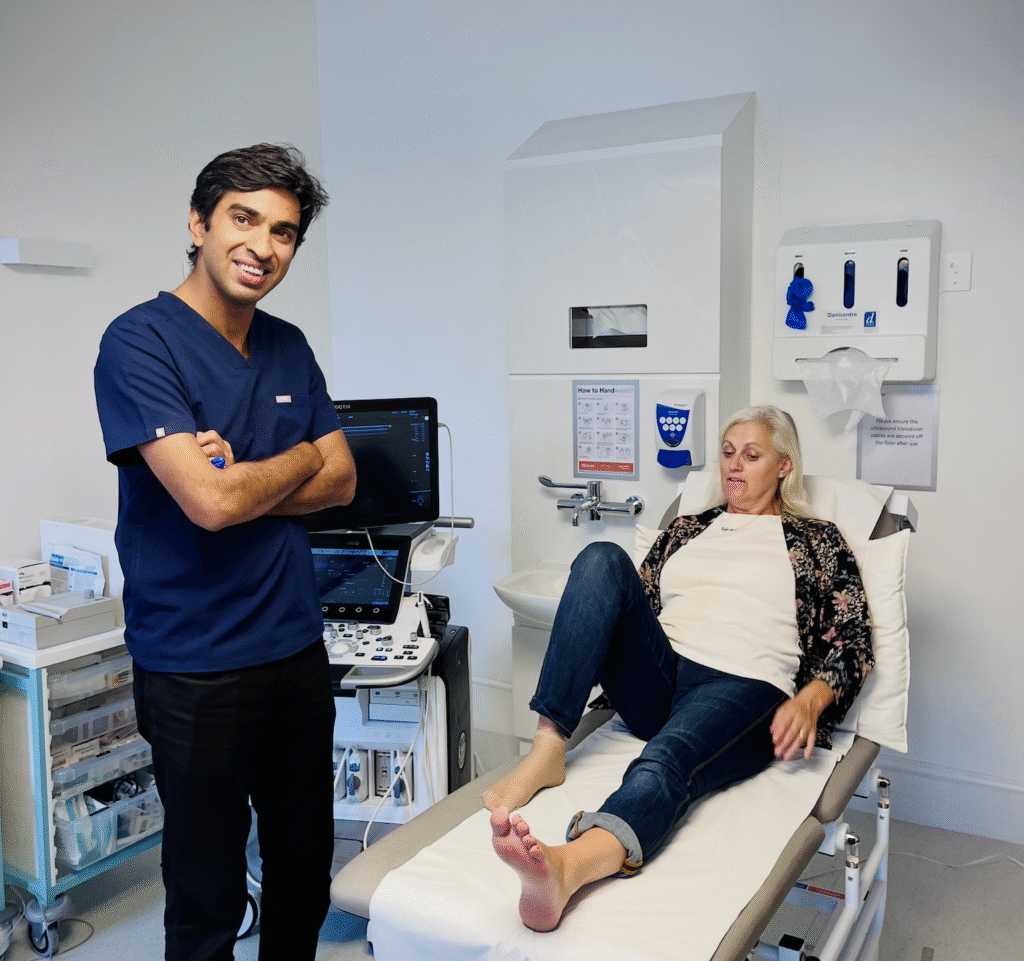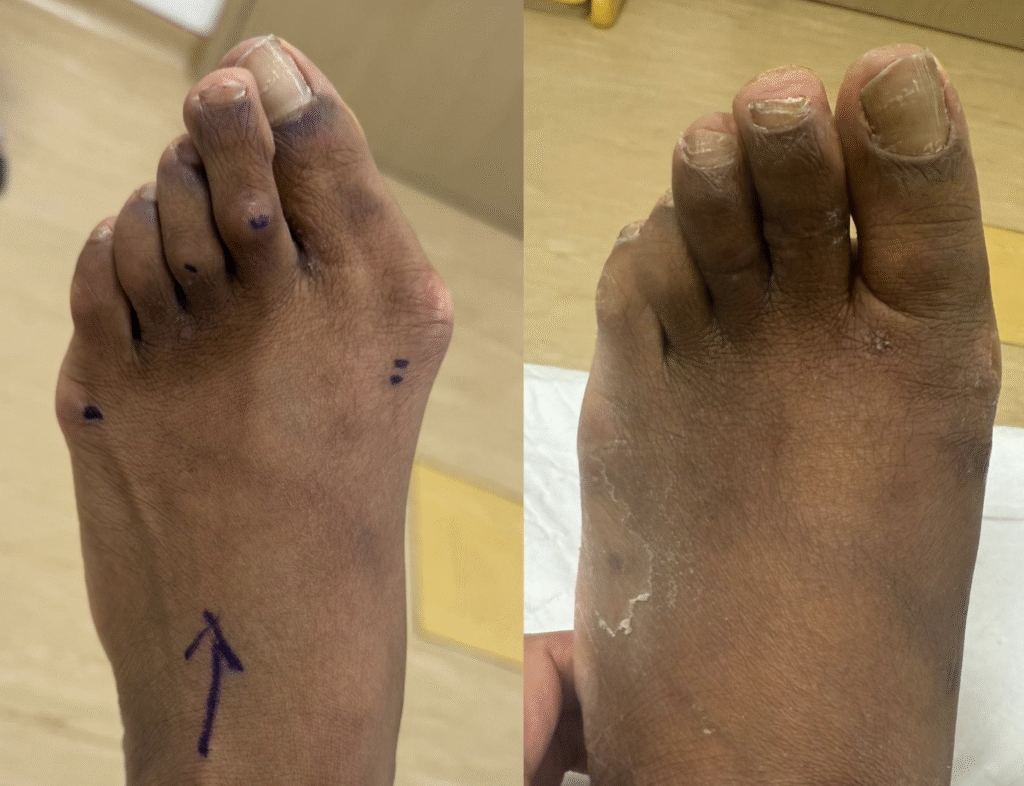By Mr. Kaser Nazir, Consultant Foot & Ankle Surgeon, Harley Street London
Expert Tailor’s Bunionette Surgery with Mr. Kaser Nazir
A tailor’s bunionette—sometimes called a mini bunion or little bunion—is a painful condition that develops on the outside of the foot, near the little toe. Unlike a traditional bunion that affects the big toe, tailor’s bunionettes occur around the fifth toe and the fifth metatarsal bone.
As a Harley Street bunion surgeon, I see many patients suffering from tailor’s bunionettes. This condition often causes discomfort in shoes, swelling, and difficulty walking. Thankfully, modern surgical options such as keyhole bunionette surgery make recovery faster and less invasive than ever before.
In this guide, I’ll explain the causes, symptoms, treatments, and advantages of minimally invasive surgery for tailor’s bunionette.
What Is a Tailor’s Bunionette?
A tailor’s bunionette is a bony prominence on the outside of the foot, caused by changes to the fifth toe and its corresponding metatarsal bone.
- It usually develops gradually over time.
- The condition can lead to significant pain, inflammation, and footwear discomfort.
- In some cases, patients also develop a bursa (soft tissue swelling), which increases pain.
Symptoms of a Tailor’s Bunionette
Common signs that you may have a tailor’s bunionette include:
- Widening of the forefoot (often seen alongside a bunion).
- Swelling and redness on the outer side of the foot.
- Pain in footwear, especially narrow shoes.
- Difficulty walking long distances due to pressure on the little toe.
If you notice these symptoms, it’s important to consult a foot and ankle specialist before the condition worsens.
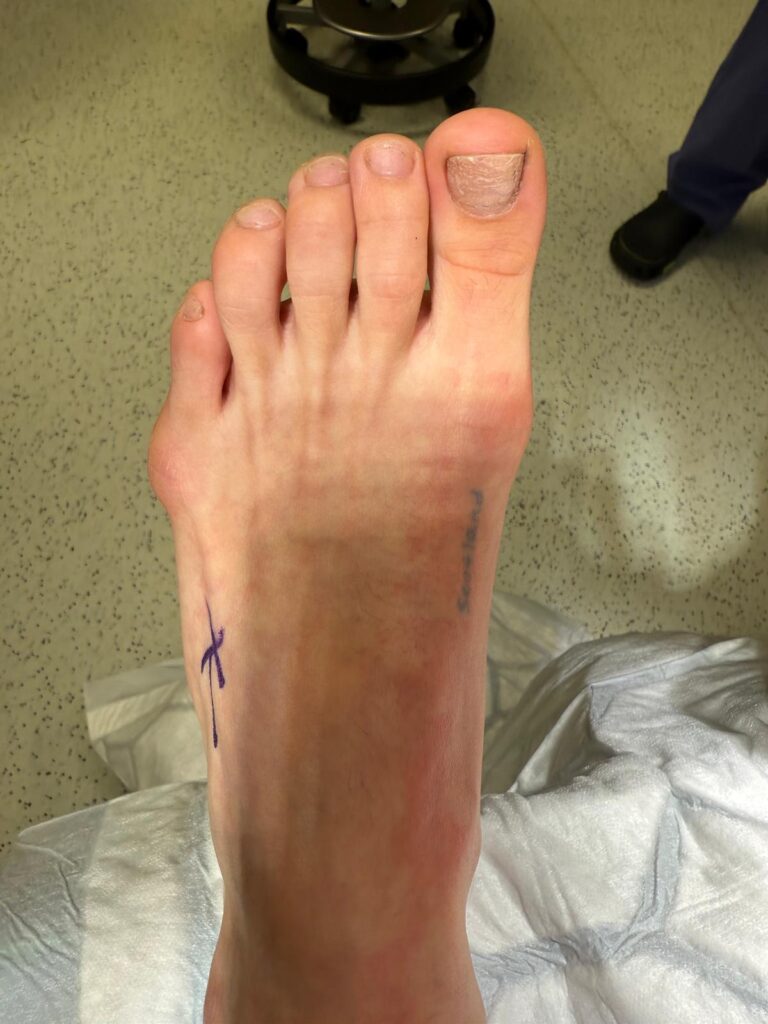
Causes of Tailor’s Bunionette
Most cases are genetic and worsen over time. There are two main causes:
- Increased angulation – spreading between the 4th and 5th metatarsals causes the little toe to move inwards.
- Curved or bowed fifth metatarsal – this natural bone shape pushes the bone outward, creating a bony bump and forcing the little toe against the fourth toe.
Both situations create mechanical dysfunction, which can lead to pain, swelling, and progressive deformity.
Traditional Treatment: Open Osteotomy
The traditional bunionette surgery method is an open osteotomy:
- A surgical incision is made on the outside of the foot.
- The bone is exposed, cut, and reset using screws.
- Wound healing takes about two weeks, while bone healing requires 6–8 weeks.
While effective, this approach involves a larger incision, more tissue disruption, and a longer recovery compared to modern methods.
What Is Keyhole Tailor’s Bunionette Surgery?
Keyhole bunionette surgery (minimally invasive bunion surgery) is an advanced alternative to open surgery.
- It requires only two tiny incisions (about 3mm each).
- The bone is realigned under X-ray guidance without exposing the joint.
- No large cuts or soft tissue dissection are required.
- Patients can walk immediately in a protective sandal after surgery.
This technique allows for a faster, less painful recovery with minimal scarring.
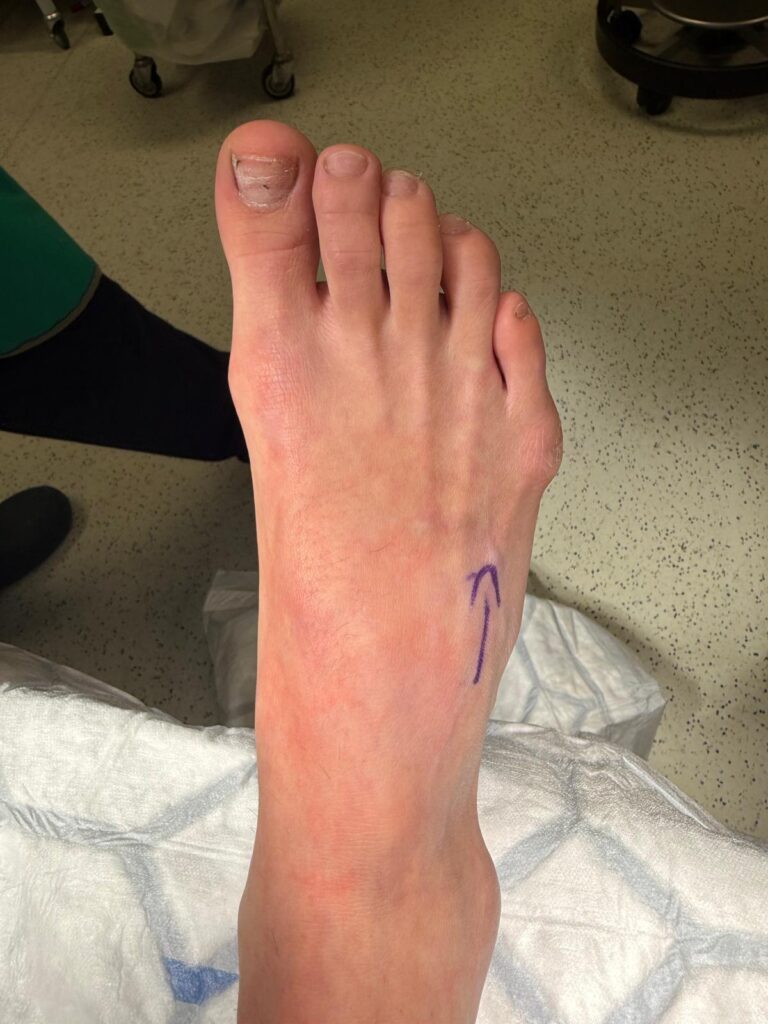
Advantages of Keyhole Bunionette Surgery
Compared to open surgery, the keyhole technique offers several benefits:
- ✅ Quicker recovery – patients can walk straight away.
- ✅ Less pain – minimal tissue disruption means less post-op discomfort.
- ✅ Reduced swelling – swelling usually resolves within 2–3 months.
- ✅ High success rate – predictable bone healing and low recurrence risk.
- ✅ Smaller scars – thanks to 3mm incisions.
Bone healing still requires 6–8 weeks, but patients often feel more comfortable much sooner.
Risks of Tailor’s Bunionette Surgery
Like any surgical procedure, there are some risks, although they are rare:
- Infection (low risk with modern sterile techniques).
- Swelling that may take several months to fully resolve.
- Rarely, a screw may need to be removed.
- Recurrence of the deformity (low risk with correct surgical planning).

Cost of Tailor’s Bunionette Surgery in London
At my Harley Street clinic, the cost of surgery is:
- £4,000 for one foot
- £6,000 for both feet (when operated on at the same time)
This includes all necessary care and follow-up to ensure safe recovery.
Do You Need General Anaesthesia?
No. Tailor’s bunionette surgery can be performed comfortably under local anaesthetic with or without sedation. Each foot typically takes no more than 30 minutes.

Tailor’s bunionettes may start small, but left untreated, they can cause significant pain and mobility problems. With keyhole bunionette surgery, patients enjoy faster recovery, less pain, and better long-term results compared to traditional surgery.
📍 As a leading bunion surgeon in Harley Street, London, I specialise in minimally invasive bunion and bunionette correction. Learn more here.
👉 If you are struggling with pain or footwear problems caused by a tailor’s bunionette, get in touch today to discuss your options and book a consultation.
